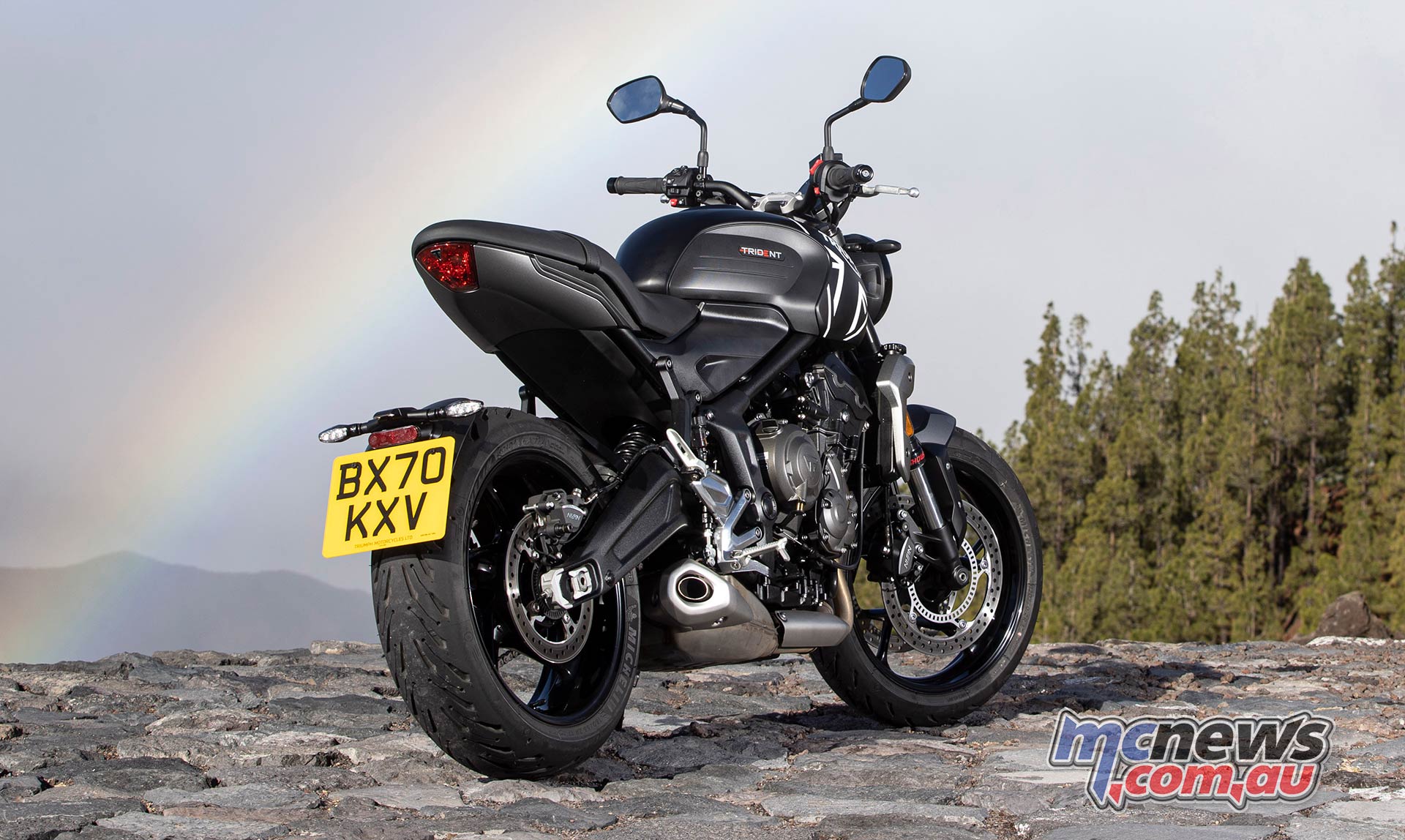Triumph Trident Review
Motorcycle Test by Adam Child ‘Chad’
Photography by Kingdom Creative/Triumph
The name Trident will flicker two memories, depending on your age, either the ‘Slippery Sam’ which took five consecutive Isle of Man Production TT wins from 1971-75, or the muscular 750/900 cc Trident which was launched in 1990.
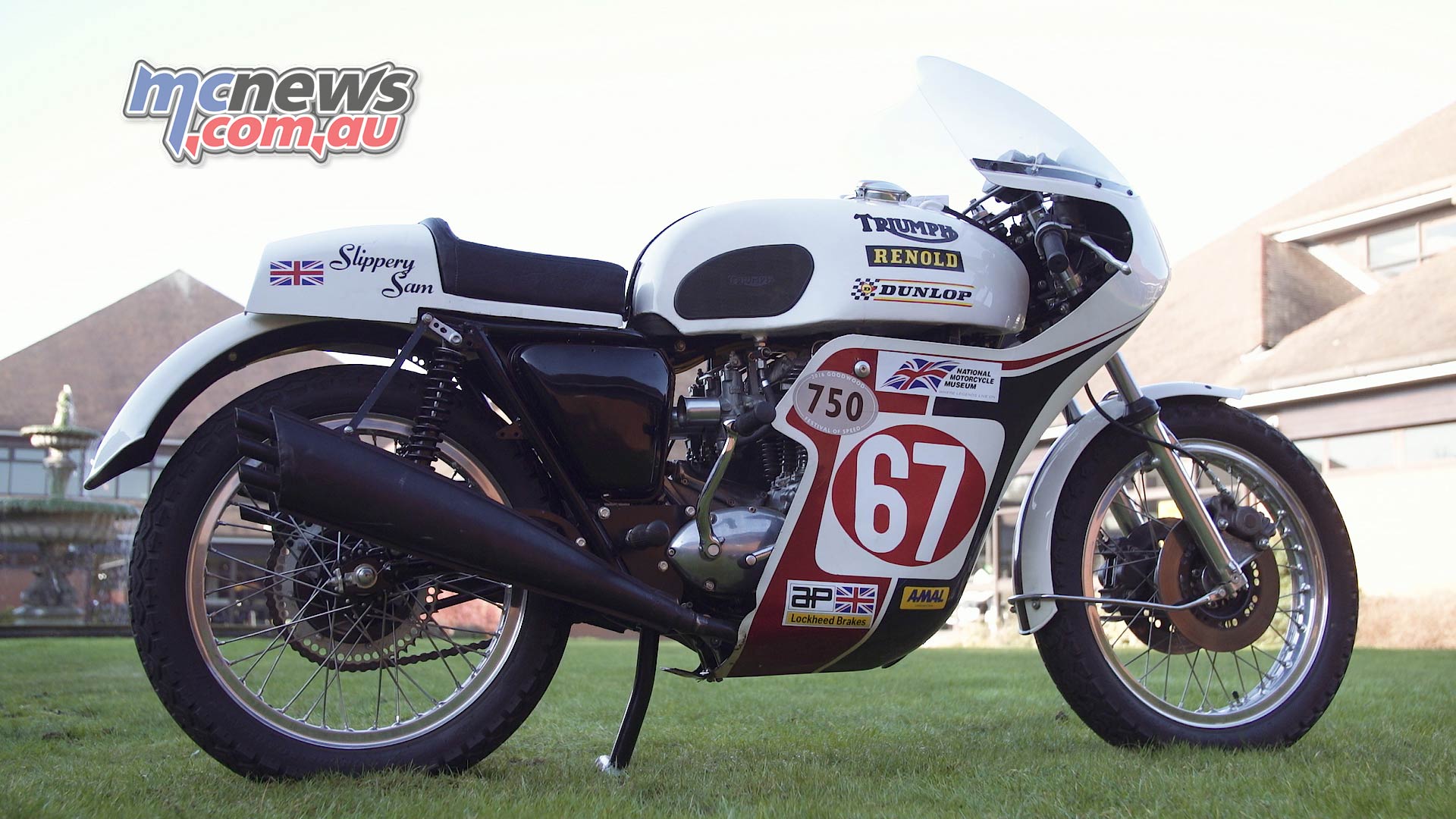
One was a dominant production race bike, the other a heavy-weight brute. They both use the familiar triple layout, as does the all-new Trident for 2021, but that is where the similarities end. The new 2021 Trident is aimed at inexperienced riders, unlike its predecessors.
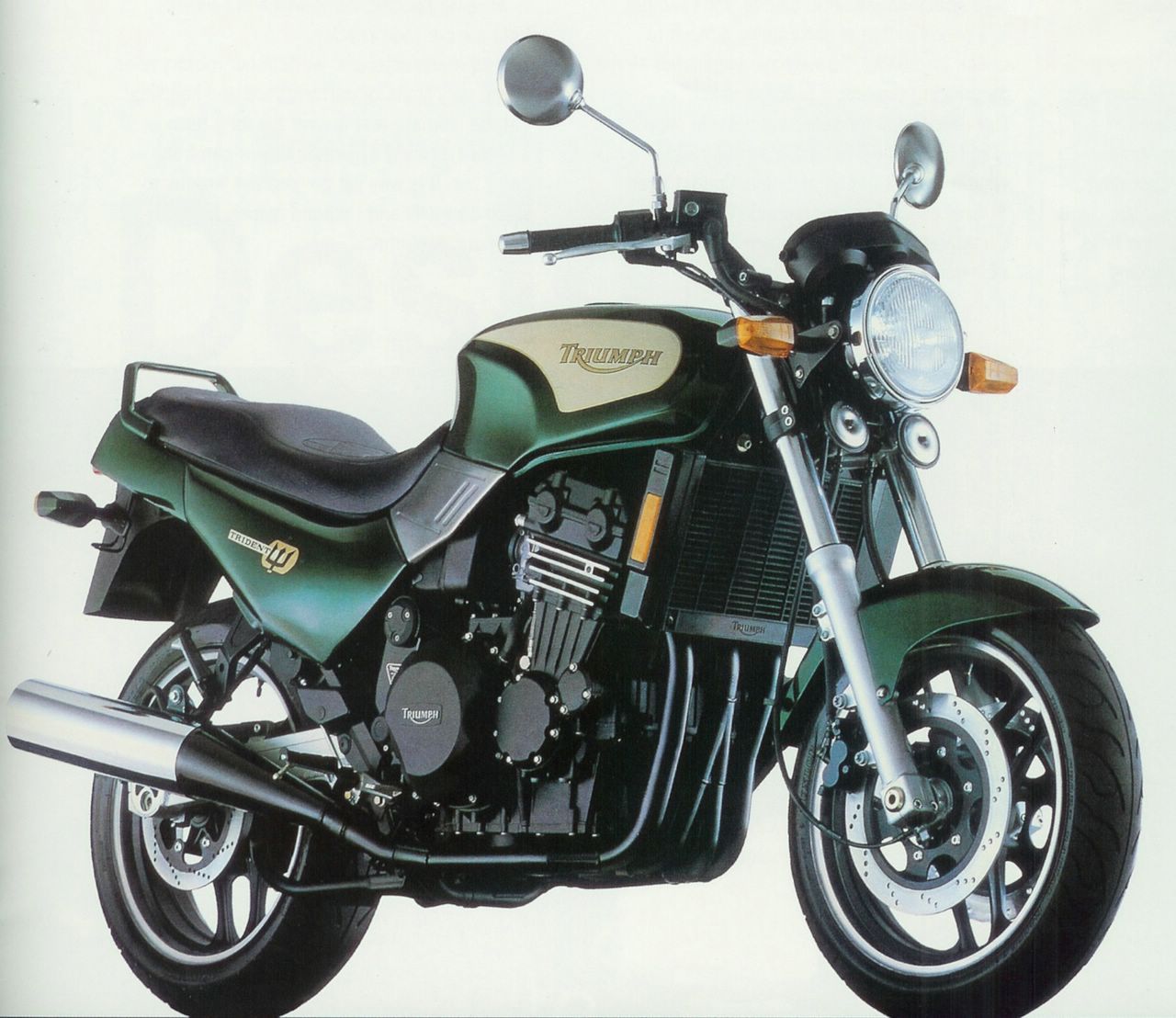
The new ‘entry-level’ Trident is powered by a 660 cc triple and is taking on the top-selling competition head-on with British style, a charismatic engine, and, according to Triumph, class-leading handling and value for money.
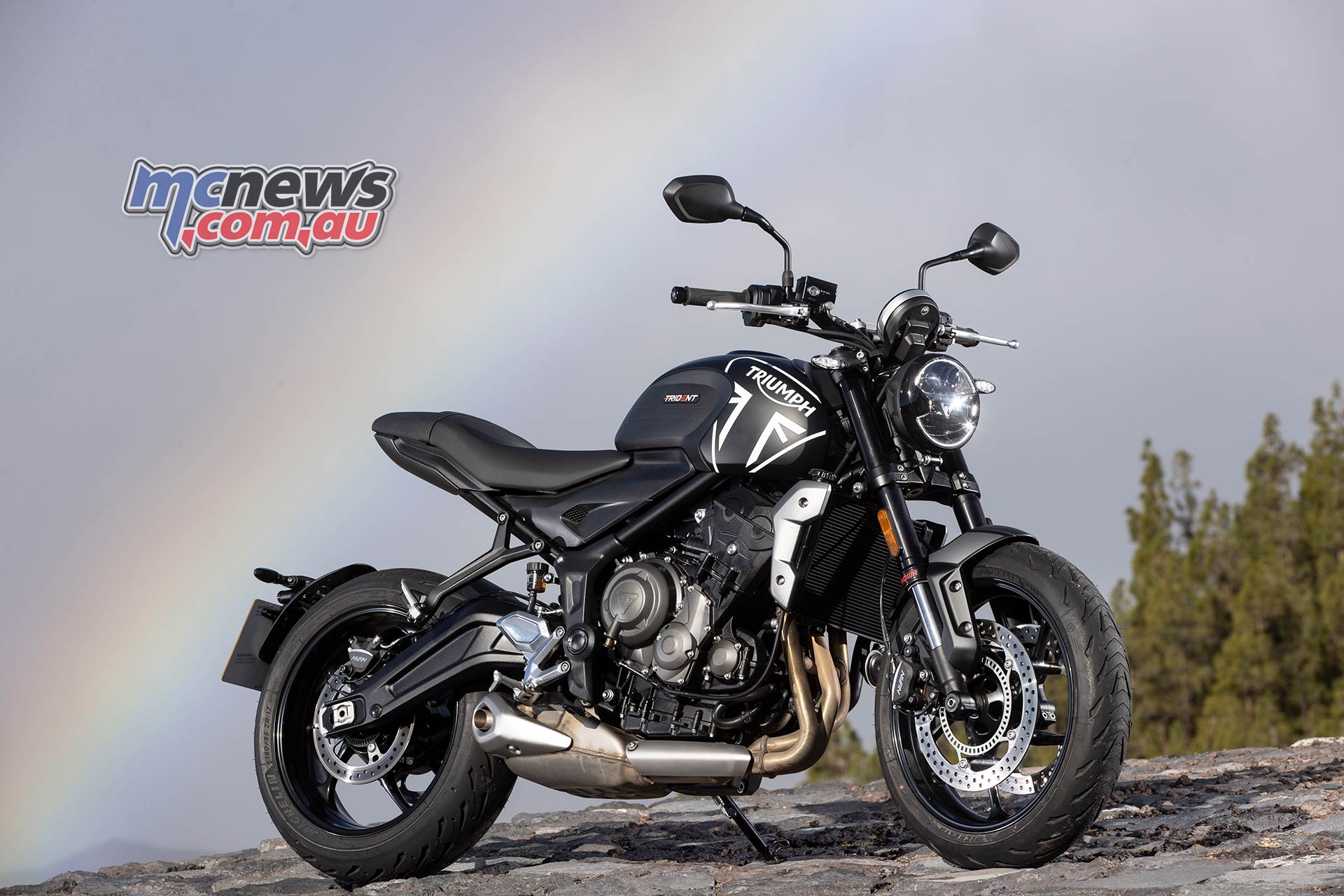
Opposed to the Tridents of old, the new Trident jumps into the learner market as an attractive, punchy middleweight to take on the strong and established competition such as Yamaha’s MT-07, Kawasaki’s Z650 and Honda’s CB650R. This segment is key for manufacturers hoping to attract new riders; getting them on-board with their brand as soon as possible. Triumph hopes the all-new Trident will feature highly in their sales charts in 2021 – attracting new riders, those coming back into bikes, and as an alternative everyday second bike.

Let’s talk about the engine
The capacity of the triple engine is 660 cc, but it is not an electronically de-tuned Street Triple S. A serious re-design: new crank, clutch and gearbox with different ratios, in all there are 67 new components in the powerplant.
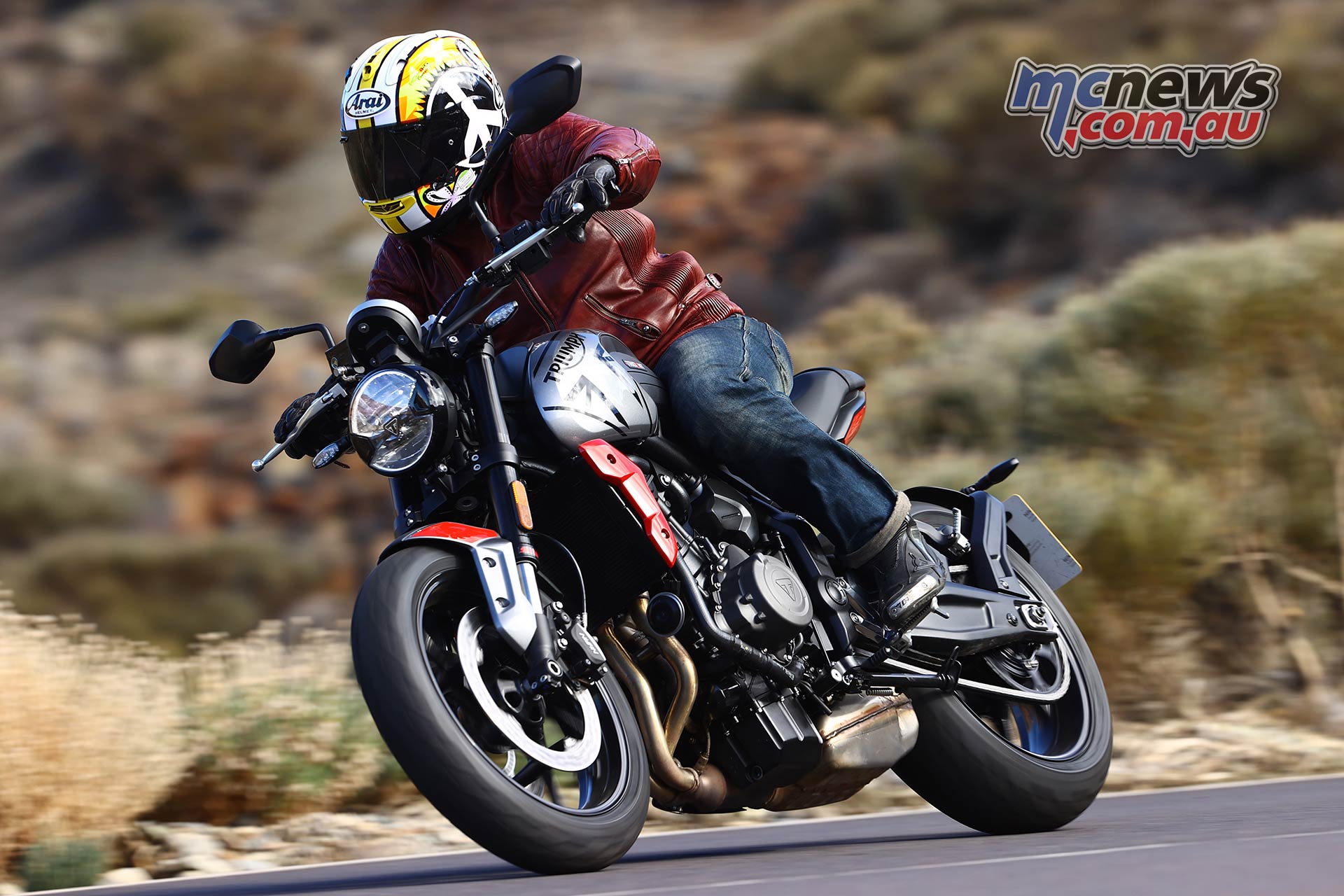
Compared to the Street Triple S, first, second, third and fourth gears are shorter, fifth and sixth taller. As you’d expect the cams sport new profiles to boost low and mid-range torque.
In the full power version we tested the Trident delivers 80 horsepower at 10,250 rpm, with a 64 Nm torque peak at 6250rpm. That’s more power than the Yamaha MT-07 and Kawasaki Z650, and more torque than Honda’s CB650R.
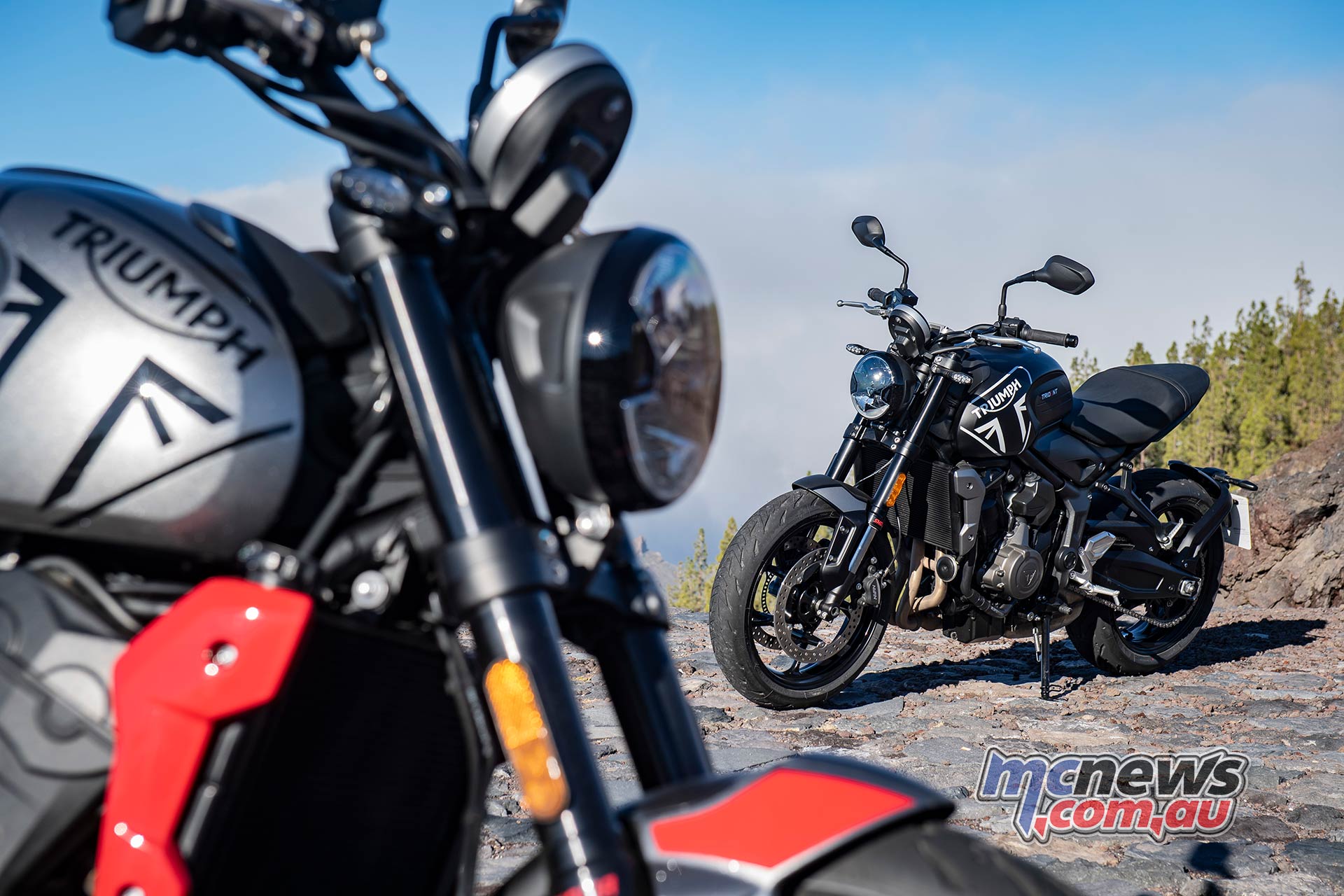
However, at this stage, Australia will only receive a detuned LAMS variant that is a unique build for the Australian and New Zealand markets. Our bikes will have 53 horsepower and 59 Nm of torque. The revs these peaks are reached at are also considerably lower than on the overseas model. LAMS peak power arrives at 8750 rpm, 1500 rpm less than the full power models, and torque peaks 1250 rpm lower.
While the LAMS model is 27 horsepower down, we don’t miss out on much torque, which suggests the Aussie spec’ Trident will be a flexible mill. The full power engine boasts 90 per cent of its maximum torque from as low as 3600 rpm, Aussie models could be even stronger when driving out of the basement but we will have to wait until next month to find out when MCNews.com.au tests an Australian spec’ machine. This review is undertaken on a full power European spec’ machine and thus the power delivery will be very different to machines we can buy here in Australia. At least for the foreseeable future anyway as Triumph continues to monitor interest before deciding if they should also bring the full 80 horsepower bike to our market.
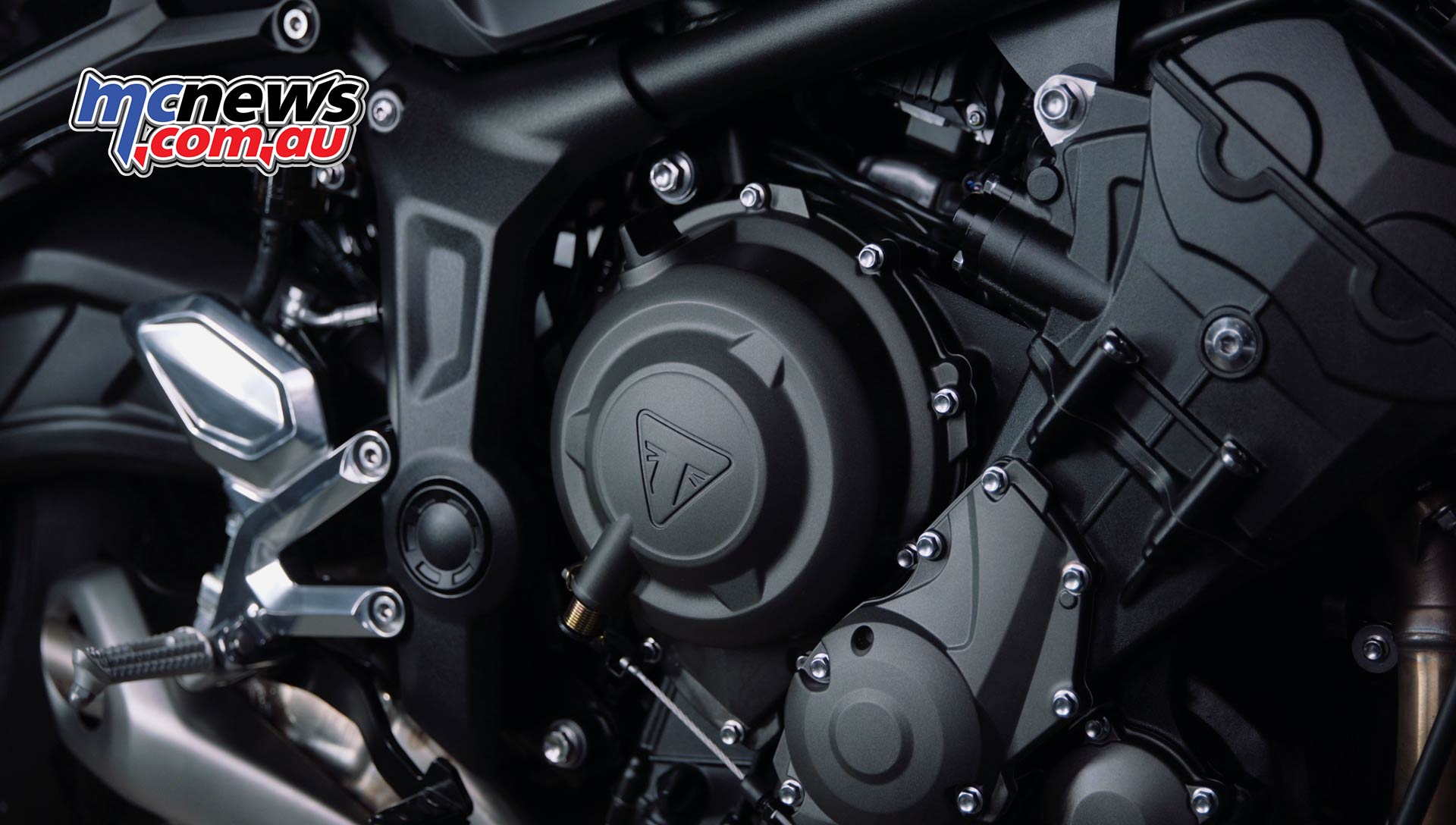
The stock exhaust system sounds superb for a standard bike. Despite being Euro-5 and an ‘entry-level’ bike in a relatively mild state of tune, it sounds fantastic. At low revs there is a nice burble, and then a slight change in pitch around 3000 rpm that is more charismatic – and unmistakably a Triumph Triple – before it builds further into the upper reaches. It’s so good that Triumph don’t offer an aftermarket item in their accessories catalogue.
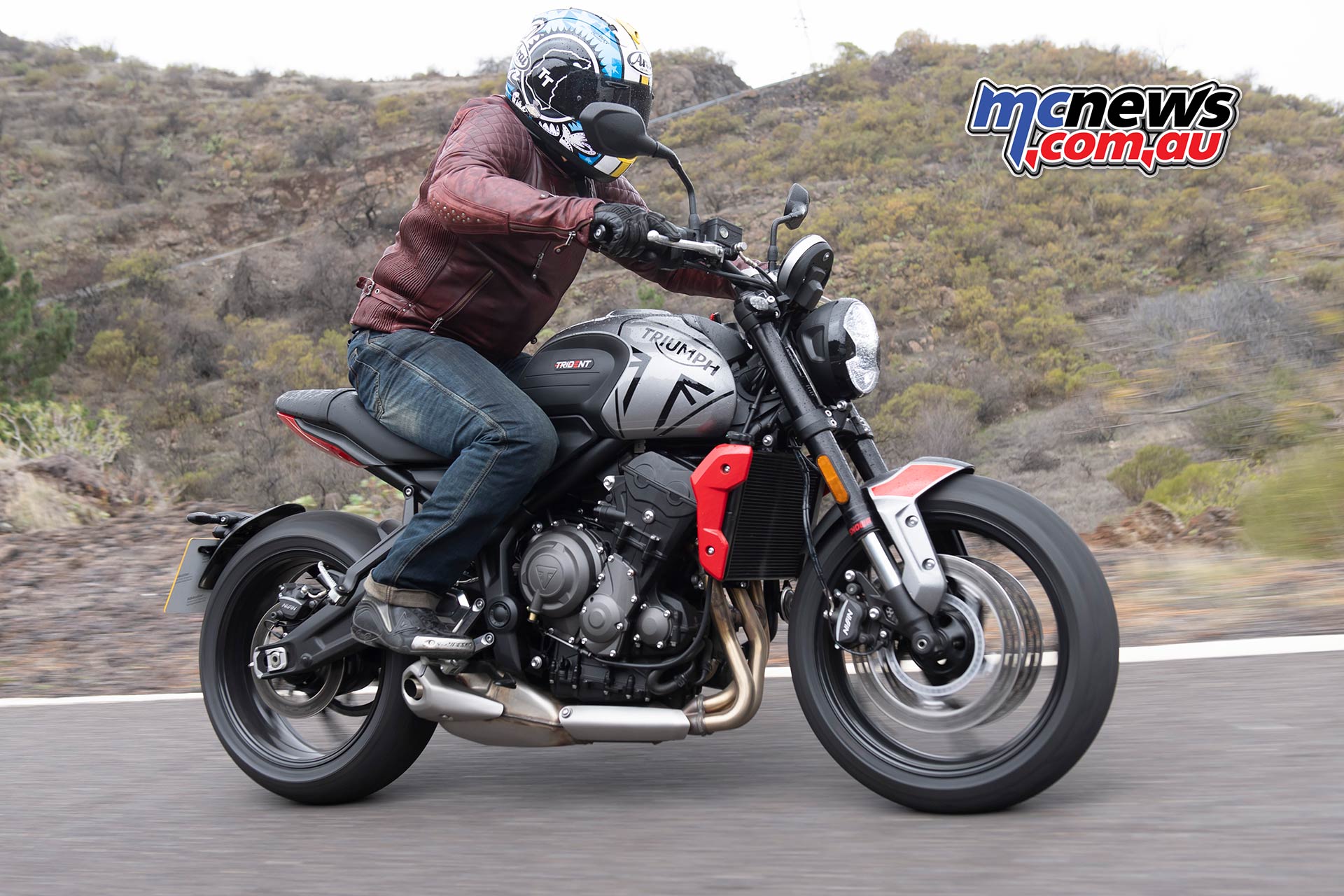
Power is soft on the first 10-15 per cent of the throttle, almost like there is a slight lag if it had a throttle cable as opposed to fly-by-wire. But this softness is ideal for new and inexperienced riders. After the initial turn of the throttle, it is more direct but still smoother than James Bond’s chat-up lines.
Triumph may only be a quoting 80 hp for the full power bike, but the Trident’s performance is strong for this class. The triple layout is the best of both worlds, having the torque of a twin with the free-revving exhilaration of an inline-four. With 90 per cent of peak torque on tap from 3600 rpm, it drives positively from low down. You can make quick and easy progress without performing the River Dance on the gear selector. But, if you should want to have fun, go down a gear or two via the smooth gearbox and the Trident will deliver – even to experienced hands.
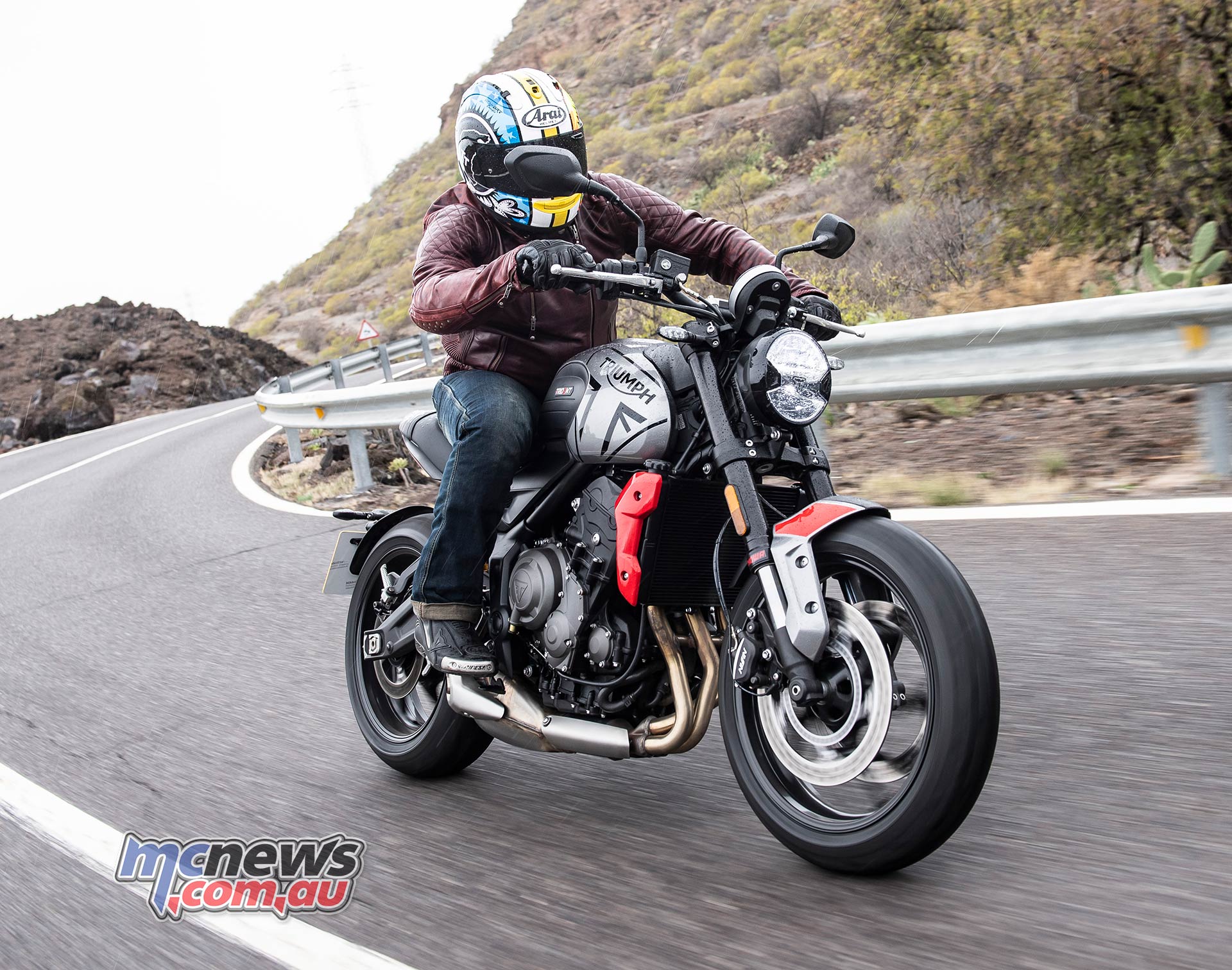
I did hit the soft rev-limiter on a few occasions, whilst getting a little too carried away. But, to be fair, most of my two days of test riding was at altitude around the main volcano in Tenerife, which drained power and didn’t do the new Trident justice. The point is that this is ‘entry-level’ bike is far from being boring or worthy. I covered over 200 km on day one and didn’t want to give it back come evening, in fact I was already looking forward to day two.
And it handles
Quoted wet weight is 189 kg, just about on-par with the twin-cylinder machines in this field. It’s a huge 23 kg lighter than the Trident 900 from the 90’s.
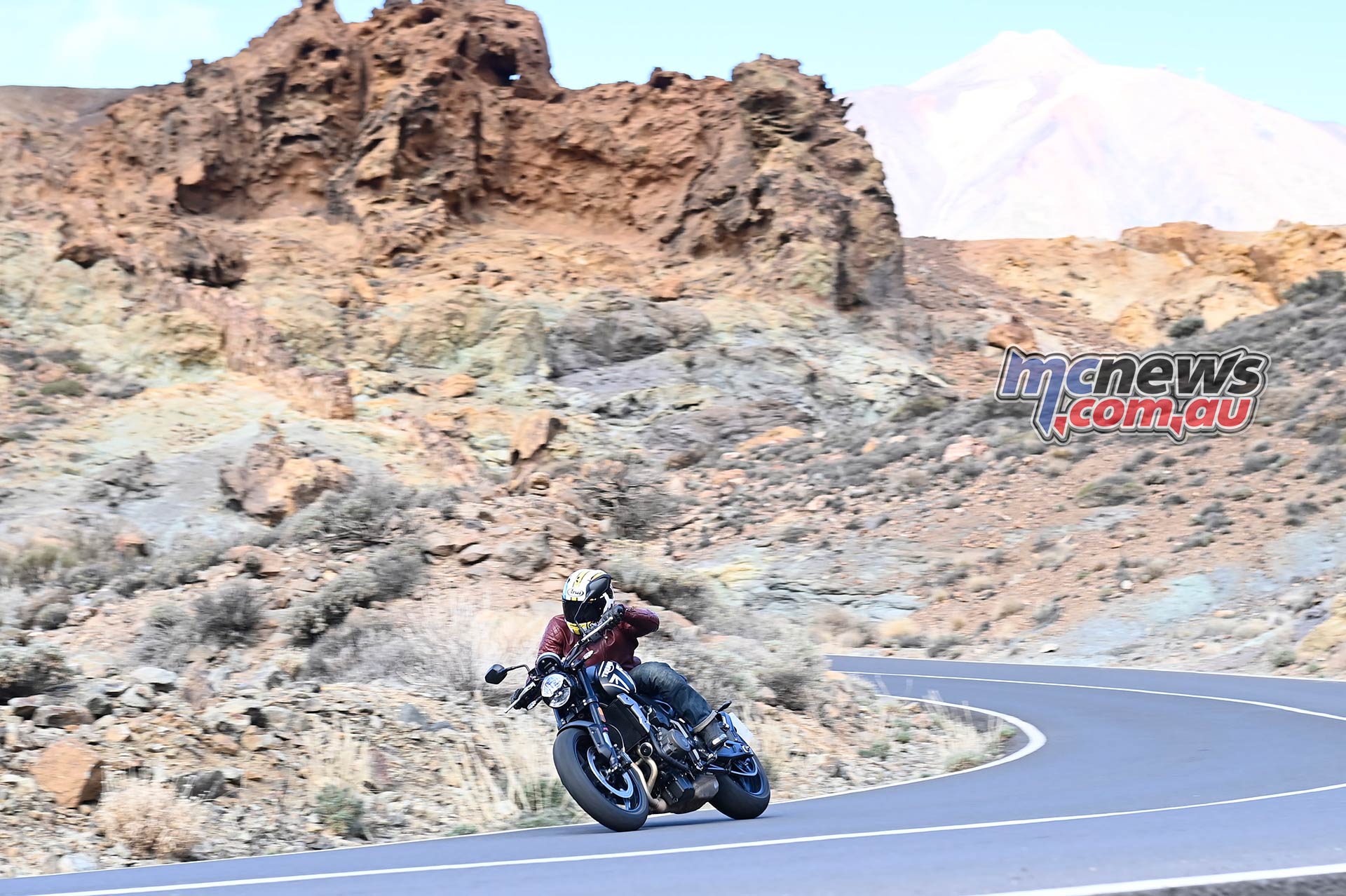
The weight isn’t intimidating for small and inexperienced riders, while the soft 805 mm seat is low and narrows towards the fuel tank. I’m 172 cm tall and was flat-footed on both sides.
There is a nice balance at low speeds, Trident shouldn’t prove intimidating for new riders, despite its masculine image and macho name.
Showa suspension rules the springs at each end; there’s no adjustment on the inverted front and only pre-load on the rear. Again, Triumph has done a notable job: they haven’t thrown budget, softly sprung and under-damped suspension at the Trident. For new riders, the suspension is forgiving, easy to get along with and takes on 90 per cent of road surfaces with ease.
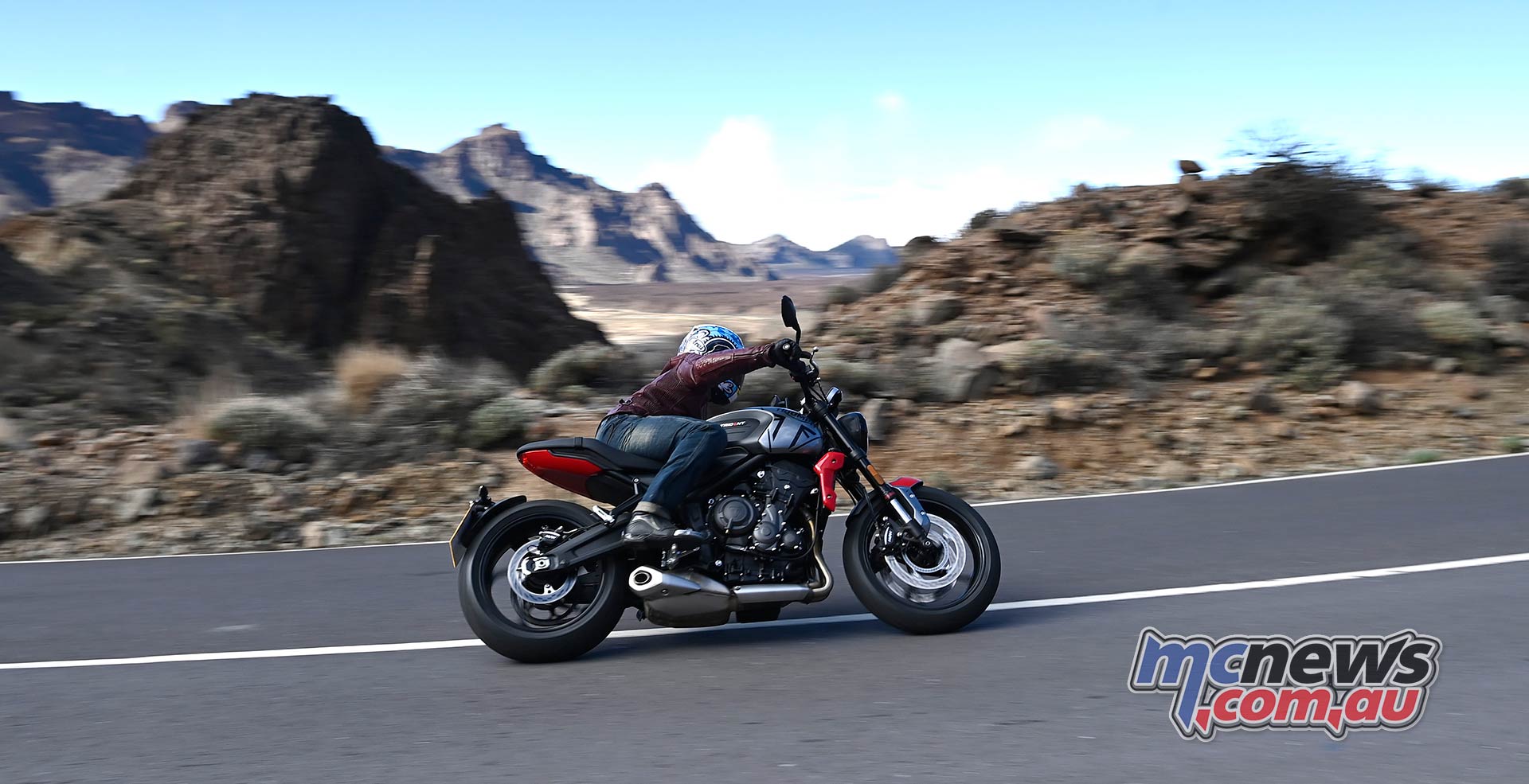
Even at speed the Showa set-up works well. Ground clearance is impressive, the Trident doesn’t drag its pegs like some of the competition, and holds a confident, smooth line. The natural riding position allows you to control and throw the bike around with relative ease. Quality Michelin Road 5 tyres performing reassuringly in the cold and damp we encountered on the test.
The forks lack a little control under heavy braking but, overall, when comparing its sporting ability to the competition, the Trident’s handling is hard to fault. Yes, the Showa suspension lacks adjustability but most riders won’t feel the need to twiddle anything. There is at least all-important rear spring pre-load adjustment for when you are adding a pillion or luggage. Luggage is available in the accessories catalogue but the pillion you will have to find yourself.
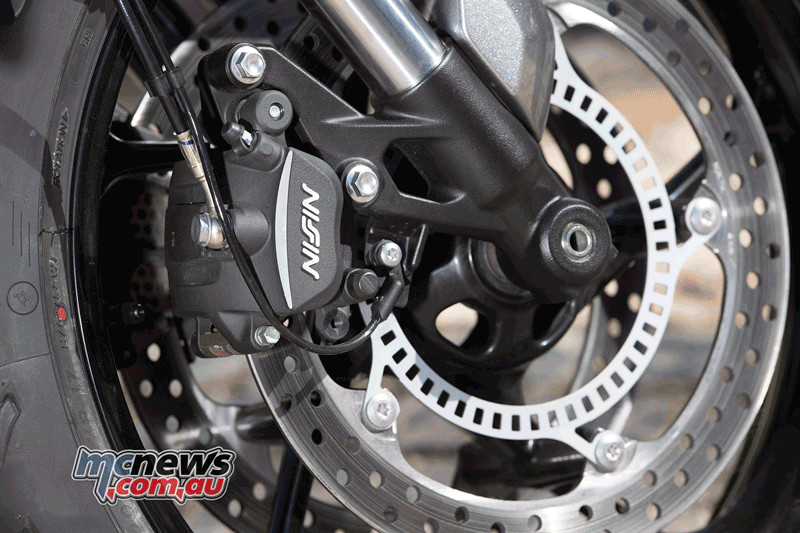
Nissin two-piston calipers, grabbing twin 310 mm discs, are just about up for the job. They have a progressive feel, the lever is span adjustable, and again ideal for new riders. ABS as comes as standard, but without an IMU they are not lean-sensitive. The ABS isn’t too intrusive, you can feel the rear working in extreme situations as the slipper clutch controls the rear wheel during aggressive down changes, but the front is well controlled.
Experienced riders will soon learn that while one-finger braking is fine during normal riding, extreme situations though demand more than one finger on the lever. The stoppers are on par with the competition, possibly stronger than some, but will seem underwhelming for those moving down from more expensive brake set-ups. This isn’t a slow bike, and the stoppers could be more powerful.

$12,690 Ride Away
The Thai-built Trident is a completely new bike for 2021, and even at a standstill it oozes quality. At face value, that $10,990 +ORC price tag, which converts to $12,690 Ride Away looks like a good value proposition. That is only marginally more expensive than Honda’s CBR650R, Kawasaki’s Ninja/Z 650 duo or Yamaha’s hugely successful Yamaha MT-07. Of the major brands only Suzuki seriously undercuts them with SV650.
Triumph are boasting the lowest servicing costs in the segment with 16,000 kilometre service intervals that add more value to the ownership equation. Warranty coverage is two-years unlimited kilometres.
Triumph quote 3.9 litres per 100 kilometres. Riding aggressively on mountain passes, I whittled that down to 4.5 litres per 100 km, which, considering my over-excited throttle hand, was an excellent return. The fuel light came on at 190 kilometres, which again isn’t bad from a 14l fuel tank. Riding normally, I’d expect around the four litres per 100 kilometres, which would give a tank range exceeding 300 kilometres. Comfort isn’t an issue and long stints in the saddle are not likely to pose a problem
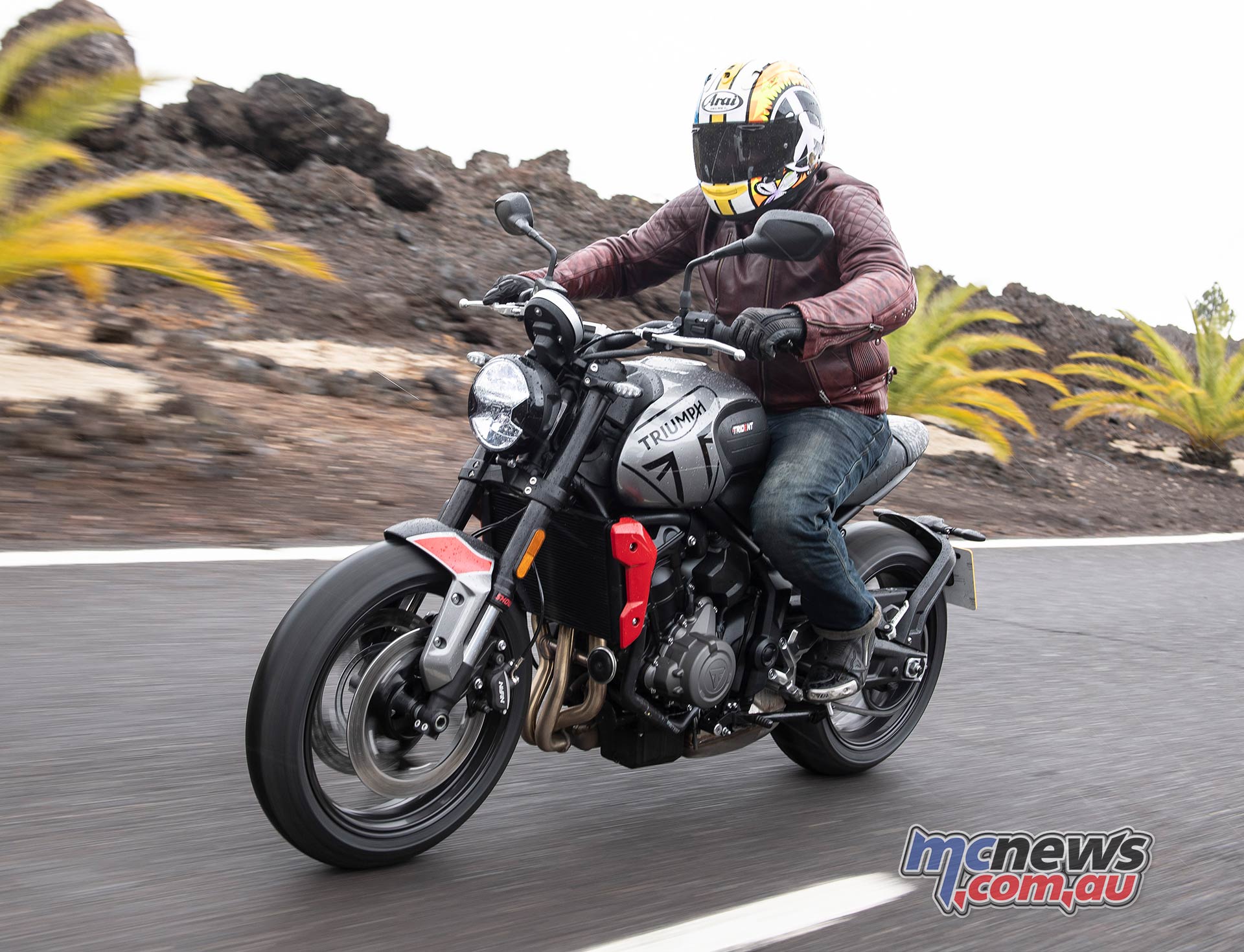
The tech isn’t too confusing…..
There are two rider modes, Road and Rain, a feature that is unusual in this category. Mode selections are easily accessible via the new switchgear and full-colour TFT dash. Each mode changes the power characteristics via the fly-by-wire throttle and traction control mapping. As mentioned, both TC and ABS are conventional and not lean-sensitive.
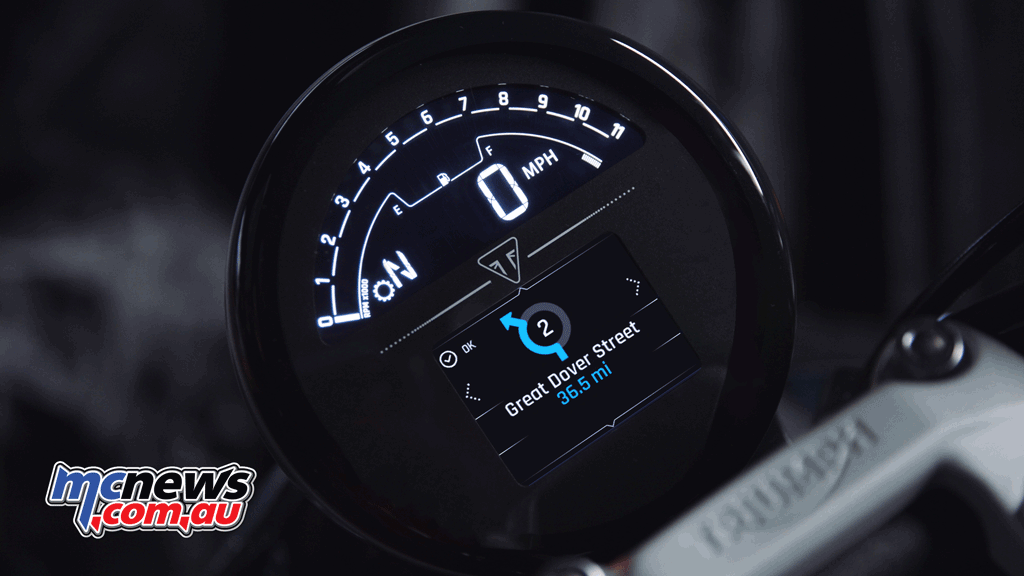
The TC is switchable from Road to Rain, which can be done whilst riding, but you can’t switch off or activate the TC on the move. For example, if you switch off the TC, it is off in both Road and Rain modes, therefore if you deactivate the TC and ride into a rain shower you have to pull over and reactivate the TC. A small gripe, but worth mentioning.
When active, the TC is smooth and not too intrusive. In the Road mode, it holds the power back when it senses wheelspin, while the re-intervention of the power after a slide is equally smooth – impressive for an entry level bike. I felt the system working on several occasions, holding back the power, perfect for inexperienced and experienced riders alike. It is not aggressive, it doesn’t cut the ignition and slam your valuables against the fuel tank.
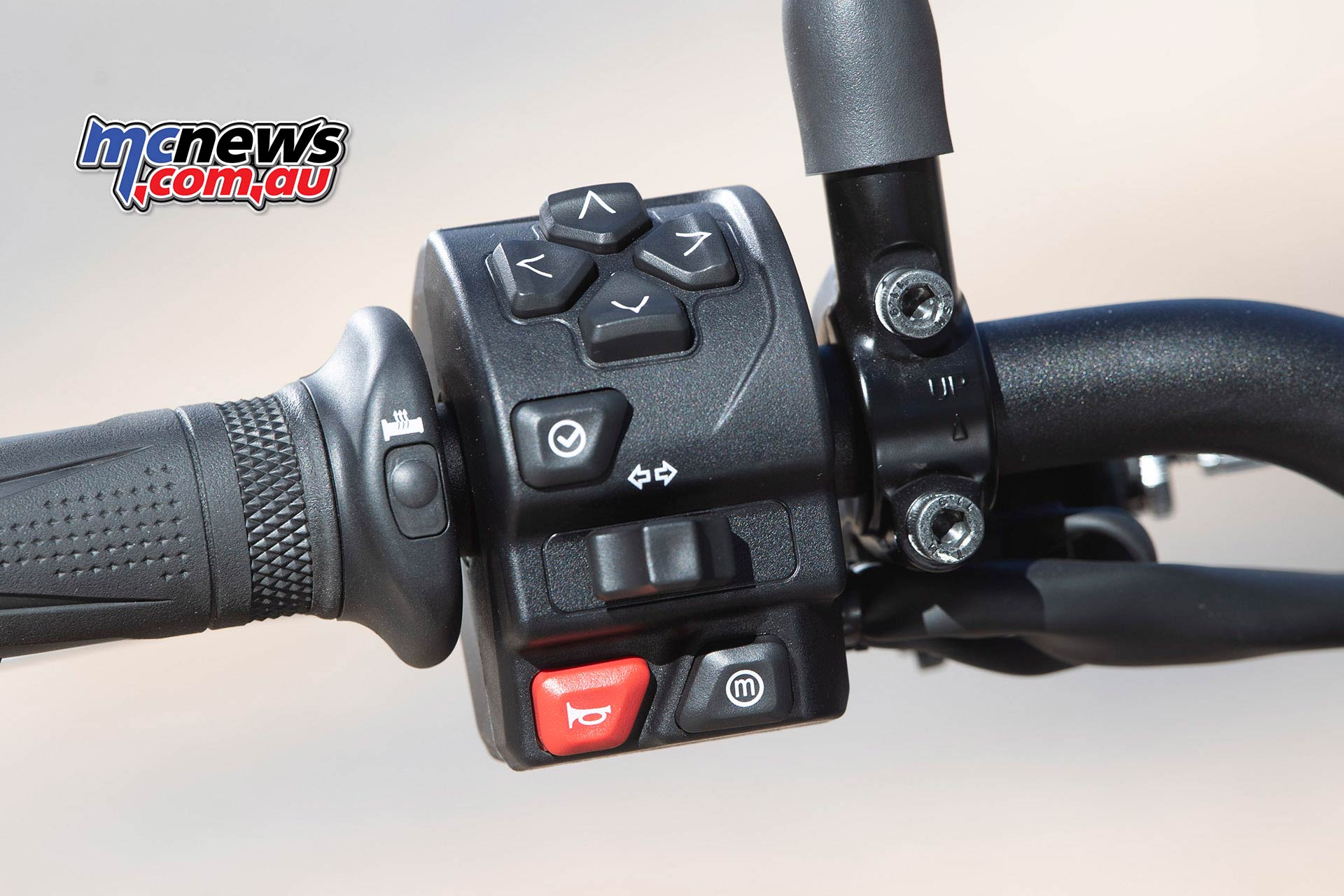
My test bike was fitted with optional heated grips and there are 44 further options to choose from. The My Triumph Connectivity System, which connects to the new TFT clocks, allowing phone/music, navigation, and GoPro access will no doubt prove popular.
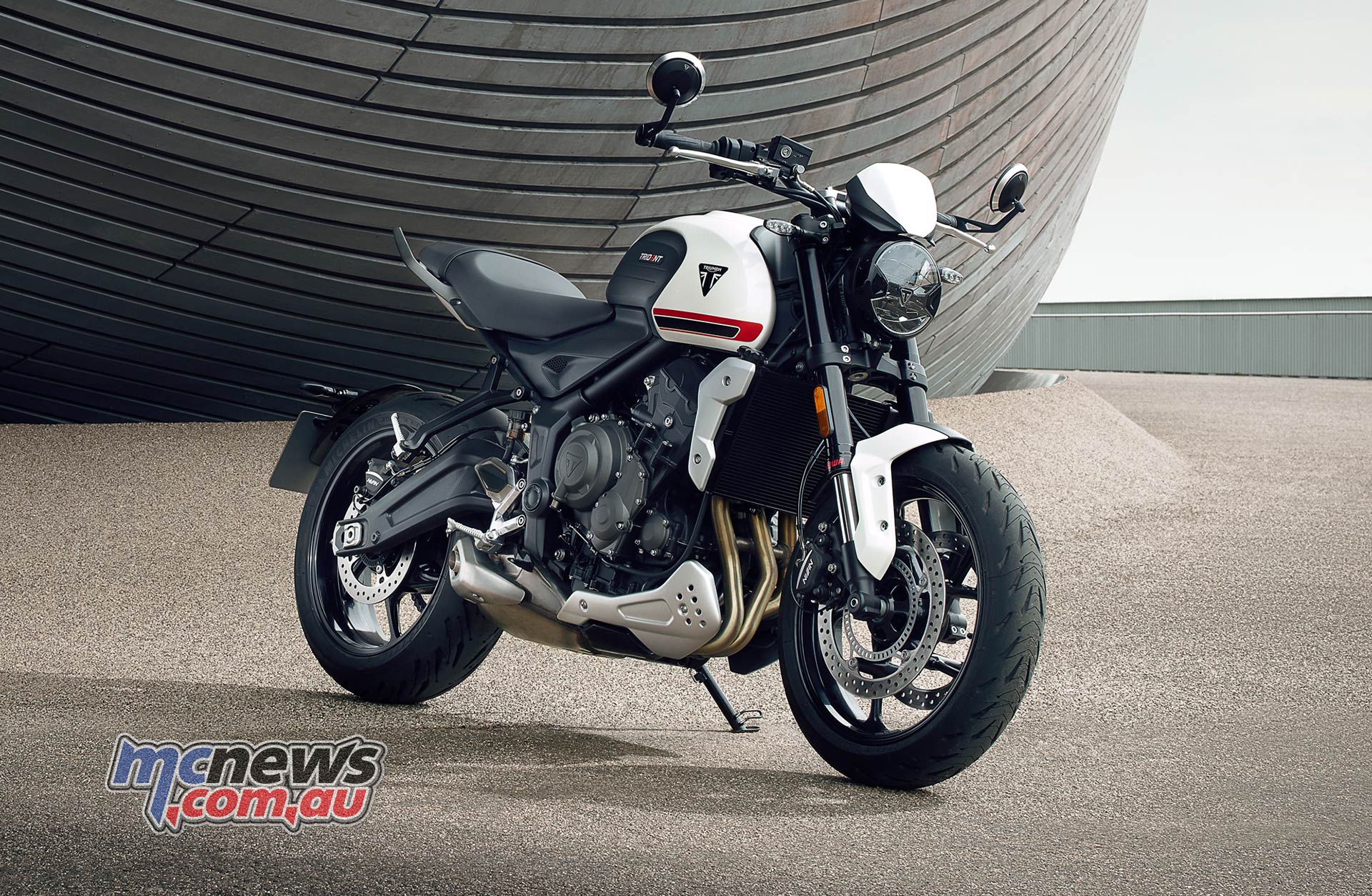
There is also an optional USB charger, tyre pressure monitoring and scrolling indicators. A list of cosmetic accessories are also available and the billet belly pan looks nice.
Verdict
I personally like the looks and image, which are slightly more mature than the competition, and not as aggressive. It’s very British and instantly recognisable as a Triumph. There are some nice touches like the cut-away fuel tank and neat TFT clocks with Bluetooth connectivity.
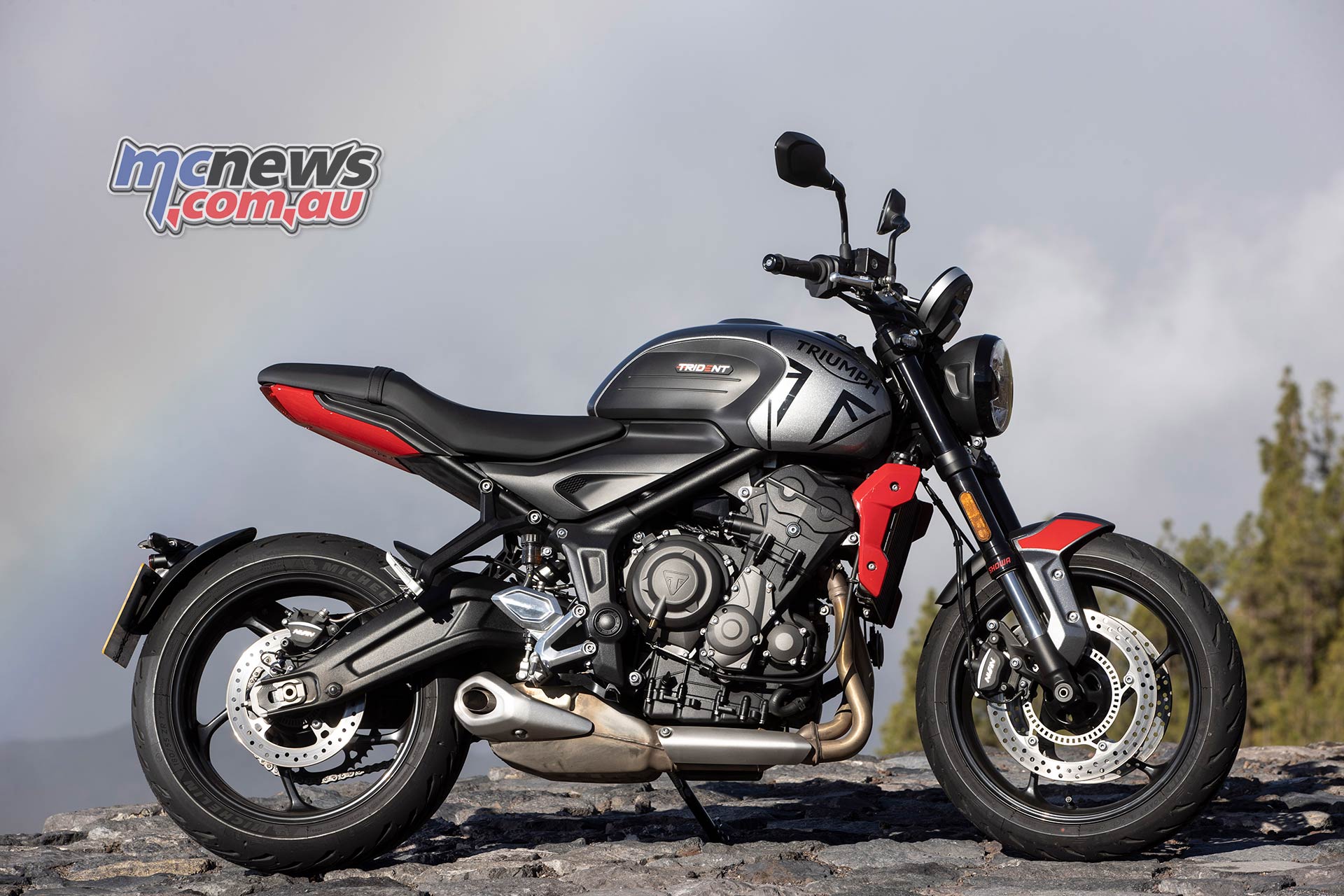
The engine is soft low down, then delivers enough road performance to provide pleasure on the road, even for experienced hands (remember this is the full power version tested here and not the Australian LAMS spec’ machine), and it is backed up by a lovely Triple soundtrack that gives it a level of soul and character that is hard to find in this class.
The handling is excellent, its low weight unintimidating while the brakes are just about up to the job. Well thought out simple, easy to use electronic rider aids give it an extra tick above most of the competition.
Even after two days of riding the Trident was still making me smile; it really is hard to fault when compared to its direct rivals at this price point. Triumph is entering an extremely competitive market with the Trident so it really needed to hit the mark – we think it does.
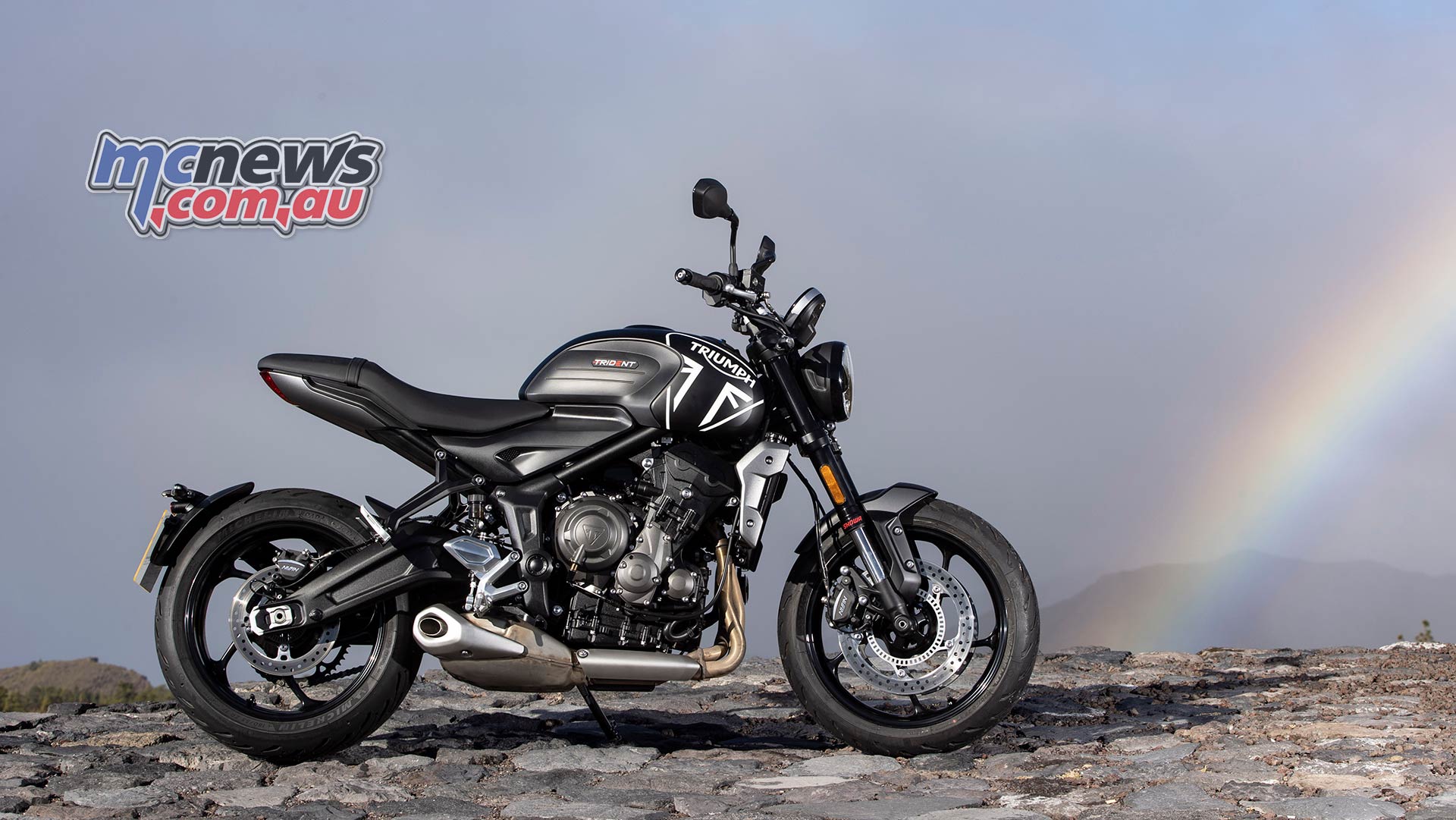
| 2021 Triumph Trident Specifications | |
| Engine / Transmission | |
| Type | 660 cc / Liquid-cooled, 12 valve, DOHC, inline 3-cylinder |
| Bore / Stroke | 74.0 mm / 51.1 mm |
| Compression | 11.1:1 |
| Power | 53 bhp (39.8 kW) @ 8,750 rpm (LAMS approved) |
| Torque | 59 Nm @ 5,000 rpm (LAMS approved) |
| Fuel System | Multipoint sequential electronic fuel injection with electronic throttle control |
| Exhaust | Stainless steel 3 into 1 header system with low single sided stainless steel silencer |
| Final Drive | X-ring chain |
| Clutch | Wet, multi-plate, slip & assist |
| Gearbox | 6 speed |
| Chassis | |
| Frame | Tubular steel perimeter frame |
| Swingarm | Twin-sided, fabricated steel |
| Front Wheel | Cast aluminium, 17 x 3.5 in |
| Rear Wheel | Cast aluminium, 17 x 5.5 in |
| Front Tyre | 120/70R17 |
| Rear Tyre | 180/55R17 |
| Front Suspension | Showa 41mm upside down separate function forks (SFF) |
| Rear Suspension | Showa monoshock RSU, with preload adjustment |
| Front Brakes | Nissin two-piston sliding calipers, twin 310mm floating discs, ABS |
| Rear Brakes | Nissin single-piston sliding caliper, single 255mm disc, ABS |
| Instruments | Multi-function instruments with colour TFT screen |
| Dimensions & Weights | |
| Length | 2020 mm |
| Width (Handlebars) | 795 mm |
| Height Without Mirrors | 1089 mm |
| Seat Height | 805 mm |
| Wheelbase | 1401 mm |
| Rake / Trail | 24.6 ° / 107.3 mm |
| Wet weight | 189 kg |
| Fuel Tank Capacity | 14 litres |
| Service Intervals | 16,000 km |
| Warranty | Two years, unlimited kilometres |
| RRP | $12,690 RIde Away |
